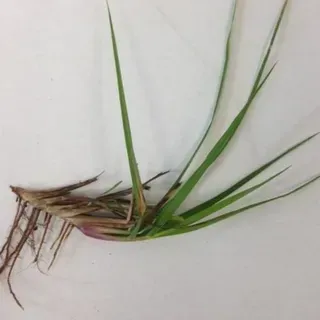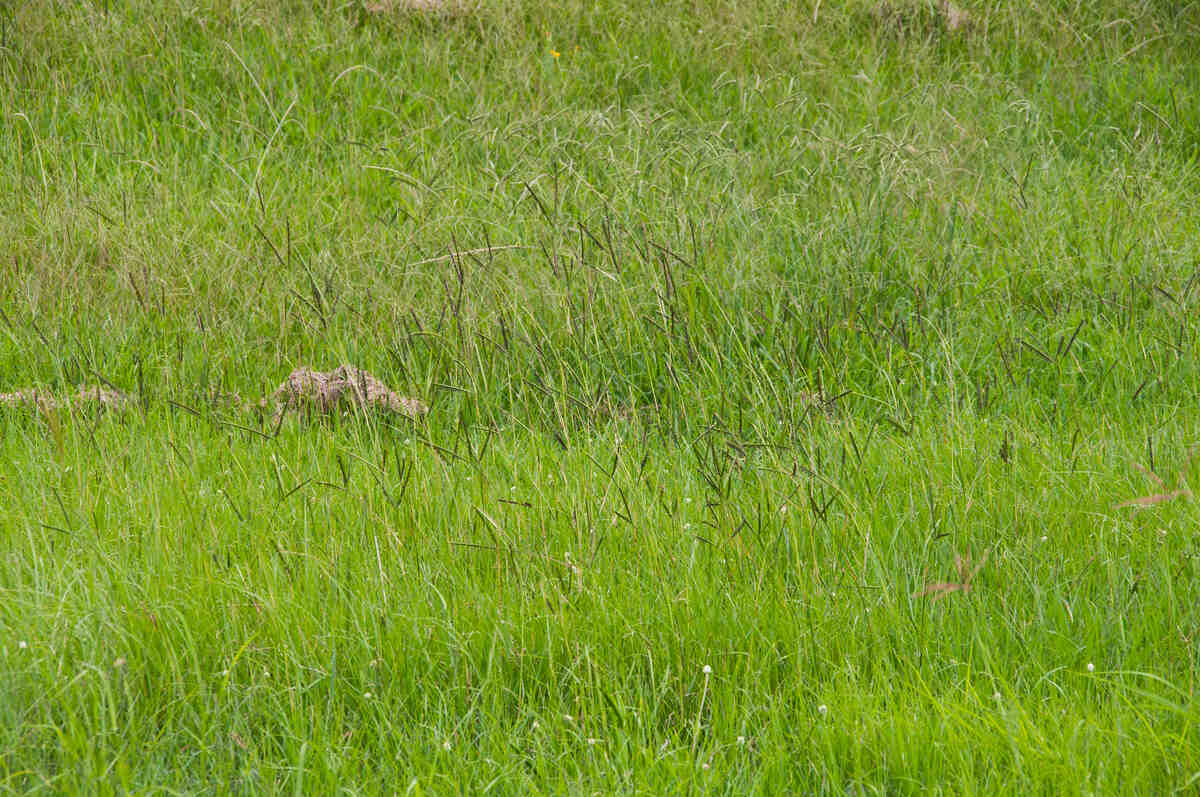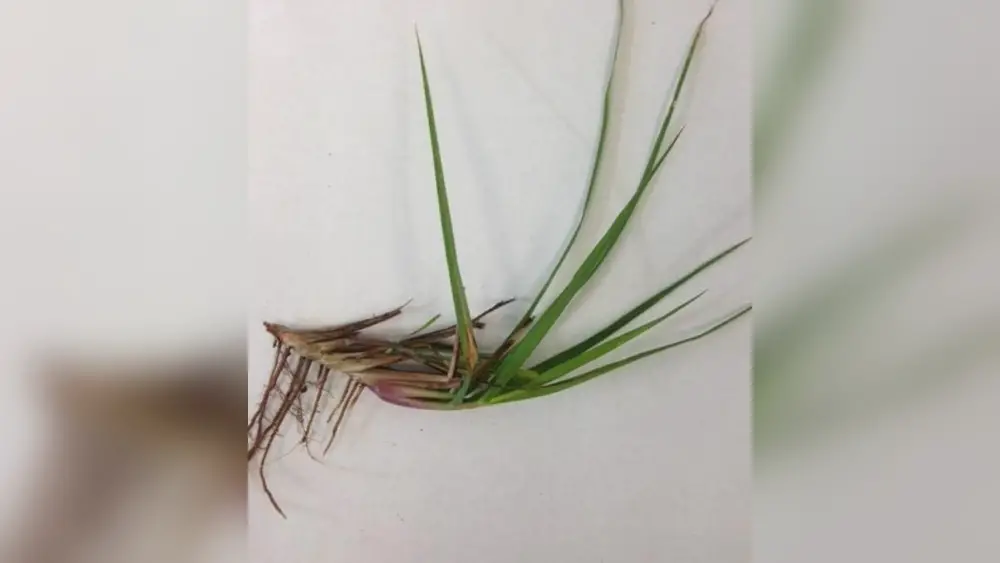Are you thinking about planting Bahia grass in Central Florida? Choosing the right time to plant is key to growing a healthy, lush lawn that stands up to Florida’s heat and humidity.
If you plant too early or too late, you might face slow growth, weed problems, or patchy grass. But don’t worry—knowing the best time to plant Bahia grass will save you time, effort, and money. You’ll discover exactly when to plant your Bahia grass seeds for the strongest, greenest lawn possible.
Keep reading to find out how to get your lawn off to the best start this season!

Credit: edis.ifas.ufl.edu
Ideal Planting Seasons
Choosing the right season to plant Bahia grass in Central Florida is key for a healthy lawn. Timing affects seed germination, growth speed, and weed control. Understanding the ideal planting seasons helps you get the best start for your grass.
Central Florida’s climate supports multiple planting windows, each with its own benefits. Planting at the right time reduces stress on the grass and helps it establish strong roots before harsher conditions arrive.
Spring Planting Benefits
Spring offers warm soil and moderate temperatures. These conditions encourage fast seed germination. Rainfall is usually steady, which helps keep the soil moist. Planting in spring gives Bahia grass time to grow before summer heat. Early growth helps the grass compete well against weeds.
Early Summer Advantages
Early summer still has warm soil and enough moisture. Seeds planted now can quickly develop roots. This timing avoids the hottest part of summer. The grass can handle summer heat better with established roots. It also prepares the lawn for a strong fall season.
Fall Planting Possibilities
Fall planting is possible but less common. Soil stays warm enough for seed growth. Cooler air temperatures reduce stress on new plants. Fall planting allows grass to grow before winter dormancy. It may need more watering to support seedling growth. Fall planting is a good backup option.
Avoiding Summer Planting
Summer is the hardest time to plant Bahia grass. High heat dries out the soil fast. Seeds struggle to stay moist and fail to germinate well. Weeds grow quickly and compete with new grass. Planting in summer often leads to patchy lawns and poor growth. Wait for cooler, wetter seasons for best results.

Credit: www.lawnstarter.com
Soil Preparation Tips
Preparing the soil properly ensures healthy growth for Bahia grass in Central Florida. Good soil preparation improves seed germination and root development. It creates a strong foundation for the grass to thrive under Florida’s climate.
Focus on testing the soil, applying the right fertilizer, and managing moisture carefully. These steps help you get the best results when planting Bahia grass.
Soil Testing Importance
Soil testing shows nutrient levels and pH balance. Bahia grass grows best in soil with a pH between 5.5 and 6.5. Testing helps identify any nutrient deficiencies or excesses.
Use a soil test kit or send samples to a local extension office. Adjust soil based on results for better grass health and growth.
Fertilizer Recommendations
Fertilize the soil before planting to supply essential nutrients. Use a balanced fertilizer with nitrogen, phosphorus, and potassium. Nitrogen helps leaf growth, phosphorus supports roots, and potassium boosts overall health.
Apply fertilizer according to soil test results. Avoid over-fertilizing, which can harm the grass and environment.
Moisture Management
Keep the soil moist but not waterlogged after planting. Bahia grass seeds need consistent moisture to germinate well. Water lightly and frequently during the first few weeks.
Once established, reduce watering gradually. Proper moisture management prevents seed loss and encourages strong root systems.
Planting Methods
Planting Bahia grass in Central Florida requires choosing the right method for your lawn. Each method has unique benefits depending on your soil, budget, and desired speed of growth. Understanding these options helps achieve a healthy, lush lawn.
Seeding Techniques
Seeding is the most common way to grow Bahia grass. Spread seeds evenly over prepared soil for best results. Lightly rake the soil to cover the seeds, protecting them from birds and wind. Water the area gently but thoroughly after seeding. Keep the soil moist until the grass sprouts, usually within 10 to 14 days. This method is affordable and works well for large areas.
Using Bahia Sod
Bahia sod offers an instant lawn with less weed competition. Lay sod pieces tightly on prepared soil, avoiding gaps. Water immediately after installation to help roots establish. Sod is more expensive but gives quick results and is less vulnerable to erosion. Use sod when you want fast lawn coverage or when seeding is difficult.
Drilling After Rainy Season
Drilling Bahia grass seed after the rainy season improves seed-to-soil contact. This method uses special equipment to plant seeds directly into the soil. The wet soil helps seeds germinate faster and reduces seed loss. Drilling is efficient for large farms or commercial lawns. It also reduces weed growth by planting deeper than surface seeding.
:max_bytes(150000):strip_icc()/growing-bahia-grass-5093956-hero-d961302ac698404c891924c1abf0c8ab.jpg)
Credit: www.thespruce.com
Weed And Pest Control
Managing weeds and pests is vital for healthy Bahia grass in Central Florida. Proper control helps your lawn grow strong and thick. This section covers common weed problems and ways to prevent crabgrass and goosegrass. It also explains pest management strategies to keep your grass green and vibrant.
Common Weed Challenges
Bahia grass often faces weed problems that reduce growth. Common weeds include crabgrass, goosegrass, and nutsedge. These weeds compete for water, nutrients, and sunlight. They can quickly spread if not controlled early. Timely action can keep these weeds from taking over your lawn.
Preventing Crabgrass And Goosegrass
Crabgrass and goosegrass are tough weeds to control in Bahia grass. They grow fast during warm months and choke out grass seedlings. Apply a pre-emergent herbicide in early spring to stop weed seeds from sprouting. Maintain a thick Bahia lawn by mowing regularly and watering deeply. This helps grass outcompete weeds naturally.
Pest Management Strategies
Pests like mole crickets and chinch bugs can damage Bahia grass roots and blades. Regularly inspect your lawn for signs of pest damage. Use insecticides only if pest populations grow too high. Encourage natural predators like birds and beneficial insects. Proper lawn care, such as correct mowing and watering, reduces pest problems.
Maintenance Practices
Maintaining Bahia grass properly ensures a healthy and lush lawn in Central Florida. Regular care prevents weeds and keeps the grass strong against pests. Simple maintenance habits boost the grass’s growth and appearance.
Mowing Frequency
Mow Bahia grass regularly to keep it neat and healthy. Cut the grass when it reaches about 4 inches tall. Avoid cutting more than one-third of the blade at once. During the growing season, mow every 7 to 10 days. This helps the grass stay dense and prevents weeds.
Blade Care For Mowers
Sharp mower blades cut the grass cleanly and reduce stress. Dull blades tear the grass, causing brown edges and disease risk. Check and sharpen blades at least twice a year. Clean the mower after each use to avoid spreading grass diseases. Proper blade care saves time and improves lawn health.
Fertilization Timing
Apply fertilizer in spring when the grass starts growing. Use a slow-release nitrogen fertilizer for steady feeding. Avoid fertilizing in fall or winter as growth slows down. Fertilize every 8 to 10 weeks during the growing season. Proper timing helps Bahia grass develop deep roots and stay green longer.
Regional Considerations
Planting Bahia grass in Florida requires attention to regional climate and soil conditions. Different areas in Florida have unique weather patterns that affect grass growth. Understanding these differences helps ensure healthy lawns and strong grass roots.
Planting at the right time in the right region reduces weed problems and improves seed germination. This section covers key regional points for planting Bahia grass in Central and Northern Florida.
Central Florida Specifics
Central Florida has a warm climate with mild winters and hot summers. Bahia grass grows best here during spring and early summer. Soil moisture is usually adequate in these months, helping seeds to sprout well.
Planting during this time avoids the hottest part of summer. This reduces stress on young grass plants. Central Florida’s weather supports good growth before fall arrives.
Northern Florida Variations
Northern Florida experiences cooler winters than Central Florida. The best planting time here is from October to early December. Cooler temperatures slow grass growth but help with seed establishment.
Seeds planted in late fall can grow roots before winter. This prepares the grass for strong growth in spring. Avoid planting in summer due to heat and weed competition.
Year-round Planting In Central Florida
Central Florida’s mild winters allow Bahia grass planting almost year-round. Spring and early summer remain the best for quick growth. Fall planting is possible but slower.
Summer planting is not recommended due to heat stress and weeds. Year-round planting is an option if soil moisture is maintained. Consistent watering supports seed germination anytime.
Frequently Asked Questions
When To Plant Bahia Grass Seed In Central Florida?
Plant Bahia grass seed in Central Florida during spring or early summer for best growth and soil moisture conditions. Avoid summer due to weed competition.
Can You Plant Bahia Grass In The Fall?
Yes, you can plant Bahia grass in the fall, especially in warm climates like Central and South Florida. Planting in spring remains ideal. Avoid summer due to weed competition. Fall planting works best if soil stays warm and moist for proper seed germination and growth.
What Is A Disadvantage Of Bahiagrass?
Bahiagrass produces tall, tough seed heads that require frequent mowing. These seed stems can dull mower blades quickly.
Is October 1 Too Late To Plant Grass Seed?
October 1 is not too late to plant grass seed in warmer climates like Central Florida. Cooler areas may risk poor germination.
Conclusion
Planting Bahia grass in Central Florida works best in spring and early summer. This timing helps seeds grow strong before weeds appear. Avoid planting in hot summer to reduce weed problems. Regular mowing keeps the grass healthy and neat. Starting at the right time saves effort later.
Healthy Bahia grass makes your lawn green and durable. Choose spring or early summer for the best results. Your lawn will thank you with lush, long-lasting grass.

